An aspect of the goddess Tara in the Buddhist pantheon, White Tara is worshipped primarily in Nepal and Tibet as a compassionate figure associated with longevity, good health and healing. Known by a variety of epithets in Sanskrit and Tibetan such as Sita Tara, Drolma Karma or simply Drolkar, Drolkar Yeshinkorlo or Chintamanichakra Tara meaning “Wish-Fulfilling Wheel White Tara” and Mrityuvanchana Tara or “One Who Cheats Death,” White Tara is identifiable in thangkas and other painted representations by her white colour, and in sculpture, by her padmasana posture on a lotus.
The ability to avoid death forms the central attribute around which the c. tenth century CE Buddhist scholar Vagishvarakirti based his three texts on White Tara, ordered under the title ‘Cheating Death’. In c. eleventh century, the cult of White Tara was introduced to other regions, notably Tibet, by the Buddhist scholar Atisha. Due to her ability to bestow longevity upon worshippers and through her powers that promote healing and cause the cessation of suffering, White Tara came to be included, and at times centrally depicted, in a trinity of healing deities associated with long life alongside Ushnishavijaya and Amitayus. In Tibetan Buddhism, mythological accounts of White Tara’s origin trace her to the bodhisattva Avalokiteshvara’s tears caused by worldly suffering. While some accounts suggest that White Tara and Green Tara arose together out of a pool of Avalokiteshvara’s tears, other accounts specify that White Tara emerged from the tears in Avalokiteshvara’s right eye. Another story rooted in popular mythology states that White Tara was reincarnated in Wen Cheng from China, one of the wives of the Tibetan ruler Songsten Gampo.
In popular worship, the goddess is invoked in the face of disease and death through the recitation of a mantra, a pooja, meditation on the goddess and the worshipper’s identification with her, as well as through the commissioning of an image of White Tara that must be completed within twenty-four hours. The contemplation of Tara in worship is intrinsically linked to the worshippers’ ability to envision the goddess. Accordingly, she is described as a lunar figure that radiates powerful white beams of light that can potentially transform the world into a mandala and cleanse it of illusion. Worship of the goddess in the form of Wish-Fulfilling Wheel White Tara or Chintamanichakra Tara prescribes the visualisation of rings of coloured light emanating from the goddess.
Iconographically, the goddess is depicted having a white body, signifying her healing qualities and acceptance of non-dualism. She is depicted on a white lotus seat where she assumes the meditative padmasana. Her right hand extends downwards in a varada mudra or the boon-bestowing gesture, and her left hand carries a lotus plant consisting of a lotus flower in full bloom, a half-opened flower and a bud, collectively representing her compassion towards beings at various stages of enlightenment and spiritual activity. In Tibet and Nepal in particular, White Tara is depicted as Seven-Eyed Tara or Saptalochana Tara with seven eyes on each of her palms and the soles of her feet, including a third eye on her forehead indicating her wisdom. In accordance with Tara’s form as Wish-Fulfilling Wheel White Tara, the goddess is depicted with a halo or nimbus of coloured light that is meant to heal afflictions.




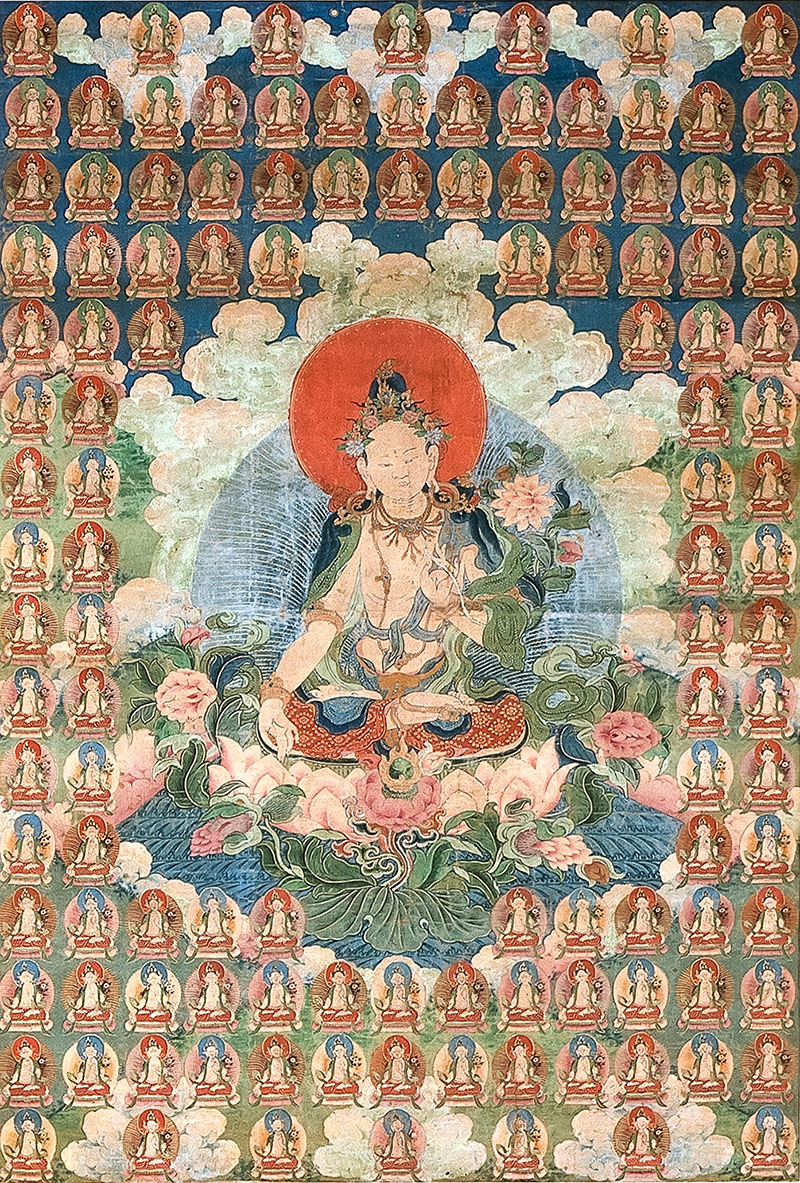
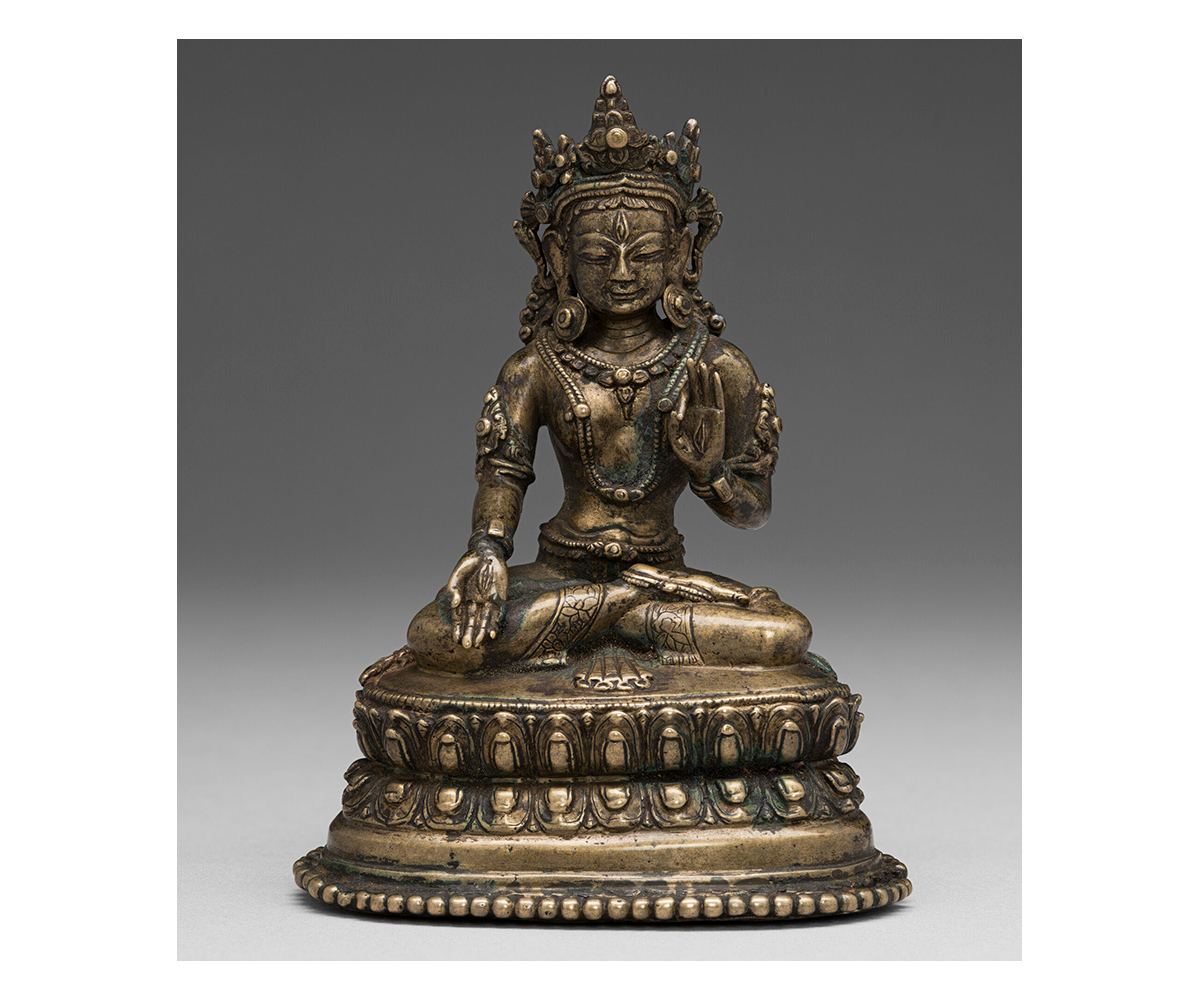
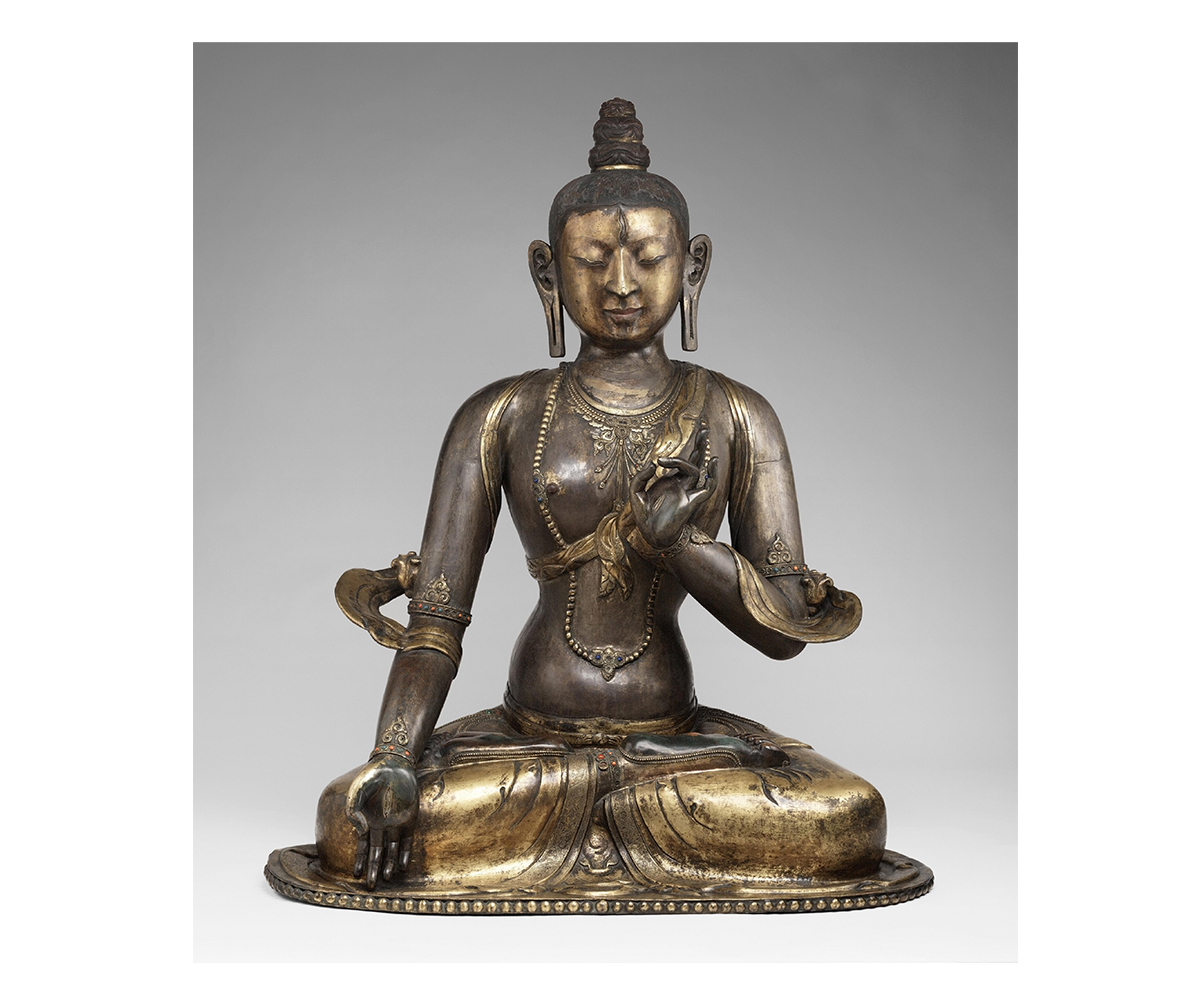
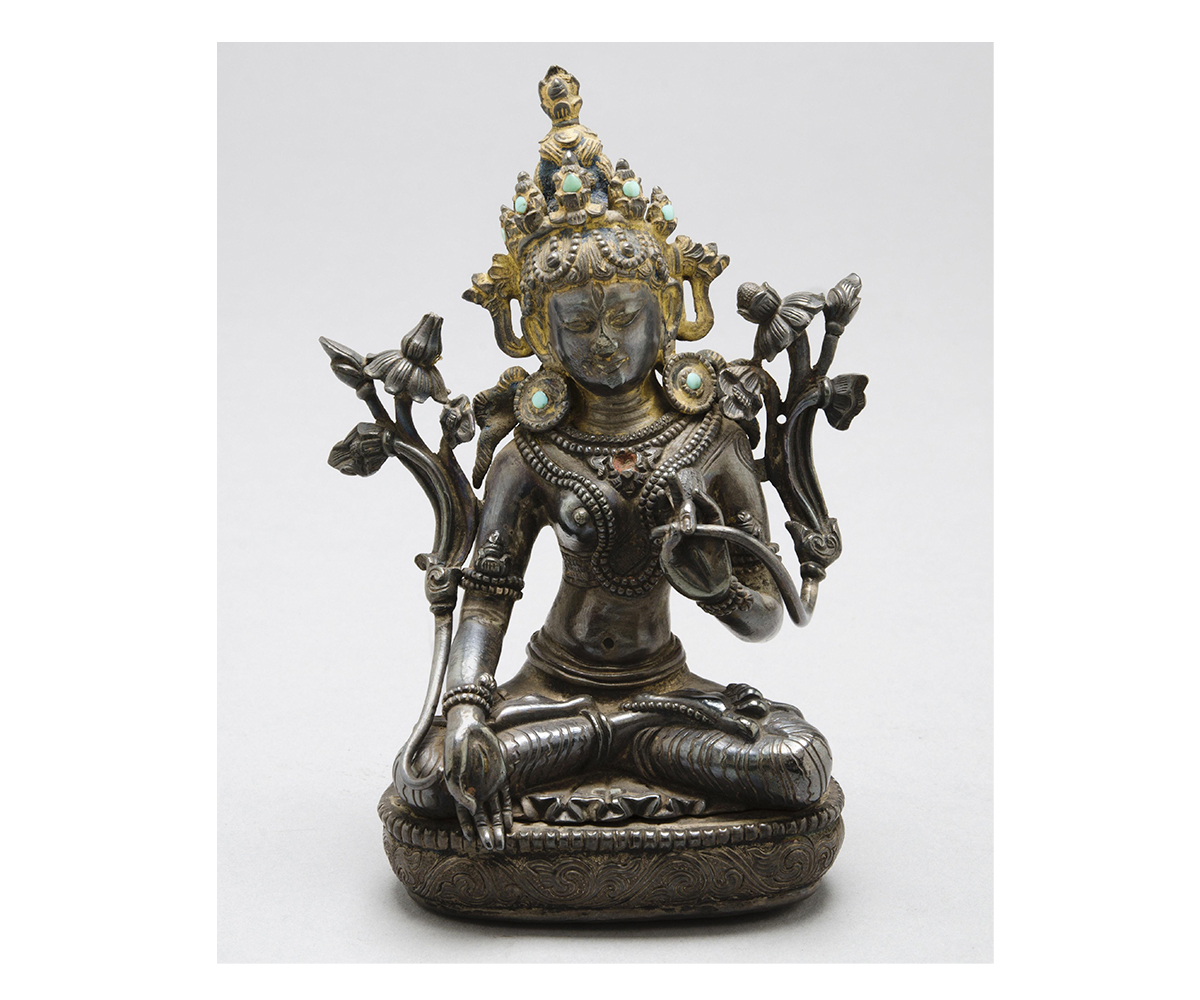

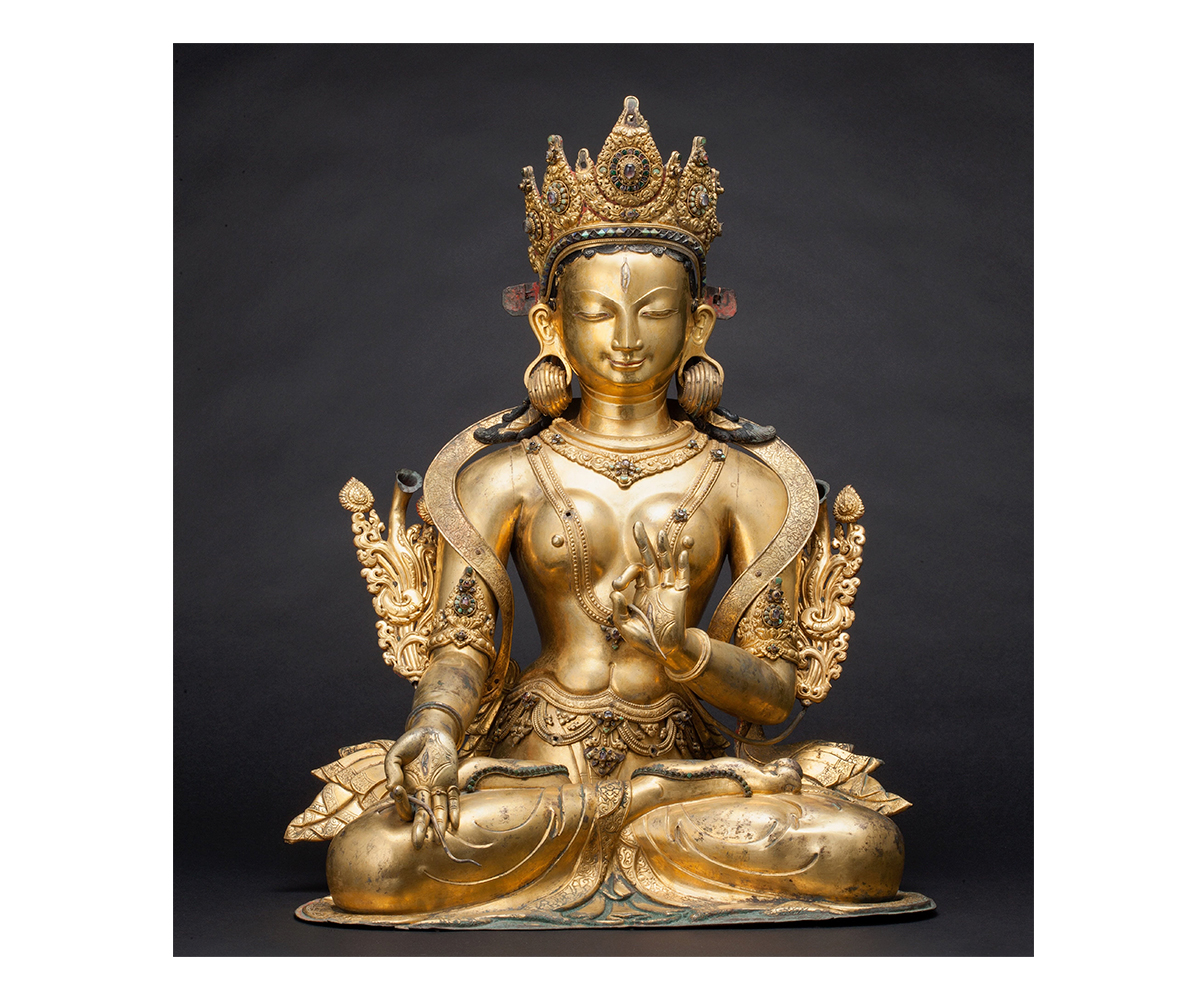

![The façade of the Maneckji Seth Agiary, a Zoroastrian fire temple, is a standout example of the popularity of the Persian Revival Style in Western India in the 19th and 20th centuries. This style was often seen in the architectural patronage of the Parsis, who emerged as one of the most influential mercantile communities of British India. Popular motifs of this style, like the mythical lamasus (winged bulls with human heads) and the faravahar (a winged guardian spirit in Zoroastrianism), drew on the historical art and architecture of the Achaemenid and Sasanian empires from sites like Persepolis, Bisotun, Taq-e Bostan, Naqsh-e Rostam and Naqsh-e Rajab in Persia.
The Parsi community’s adoption of this style occurred largely due to their networks of global commerce and politics, allowing them to access and translate research of ancient Persia into visible symbols that underlined their association with antiquity, imperial power, and art.
نمای آتشکدهی زرتشتی مانِکجی سِت نمونهی بارزی از رواج سبک «احیای [معماری] ایرانی» در غرب هند طی سدههای نوزدهم و بیستم است. این سبک غالباً در بناهایی دیده میشد که پارسیان، از بانفوذترین جوامع بازرگان در هند بریتانیا، بانیشان بودند. نقشمایههای محبوب این سبک، مانند گاو بالدار اساطیری (لاماسو) و فَروَهَر (روح بالدار نگهبان در دین زرتشت)، برگرفته از هنر و معماری شاهنشاهی هخامنشی و ساسانی، در جاهایی چون تخت جمشید و بیستون و طاق بستان و نقش رستم و نقش رجب، بود.
اقتباس جامعهی پارسیان از این سبک بسیار مرهون روابط گستردهی تجاری و سیاسی آنها بود که دسترس به پژوهشها دربارهی ایران باستان و برگردانیدن آنها به نمادهای بصری را ممکن میکرد و بر پیوند پارسیان با دوران باستان و قدرت شاهنشاهی و هنر تأکید میکرد.](https://mapacademy.io/wp-content/plugins/instagram-feed/img/placeholder.png)
